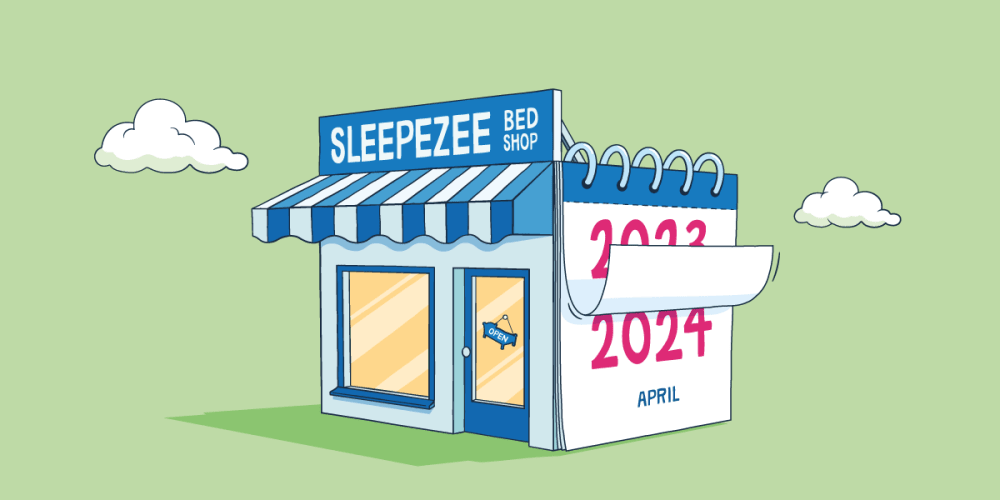What’s changing for small businesses in the 2023/24 tax year?

It’s hard to believe another tax year is almost over. It’s that time again where we’ve got to wrap our heads around the latest changes to expenses, tax rates and relief.
Here’s a quick rundown of the changes that may affect your business.
Changes coming into effect on 1st April
- The Corporation Tax rate for profits over £50,000 will rise to 25%. Limited companies with profits between £50,000 and £250,000 will be eligible for Marginal Relief, which will reduce the company’s tax bill. Use HMRC’s calculator to estimate how much Marginal Relief your company can claim.
- The Energy Bill Relief Scheme will be replaced by the Energy Bills Discount Scheme. Under the new scheme, prices for businesses will no longer be capped. Instead, businesses will receive a per-unit discount on their wholesale prices when these rise above £302/MWh for electricity and £107/MWh for gas. You can learn more about this change and how it may affect you in our blog post.
- The super-deduction capital allowance will be replaced by full expensing. Limited companies may be able to claim 100% of the cost of qualifying equipment against their taxable profits. Special rate expenses on assets that don’t qualify for full expensing may still be claimed at 50%.
- The Annual Investment Allowance for all businesses will be permanently set at £1 million.
- Research and development (R&D) relief will be extended. The changes mean that loss-making small businesses with R&D costs of at least 40% of their total expenditure will be able to claim credit of £27 for every £100 they spend on R&D.
Changes coming into effect on 6th April
- The annual exemption on Capital Gains Tax will drop to £6,000 on 6th April 2023, and to £3,000 on 6th April 2024. This means individuals, sole traders and partners will begin paying Capital Gains Tax on any profits above £6,000 made from selling certain assets between 6th April 2023 and 5th April 2024. Note that any unused exemption cannot be carried forward to the next tax year.
- The dividend allowance will drop to £1,000 on 6th April 2023 and to £500 on 6th April 2024. If you own shares in a limited company, you’ll pay 0% tax on the first £1,000 you earn in dividends in the 2023/24 tax year, with additional income from dividends taxed at a rate based on your overall income. As above, no allowance can be carried over to the new tax year.
- The top Income Tax threshold will drop from £150,000 to £125,140. This means that anyone earning £125,140 and over will pay the additional rate (called the top rate in Scotland).
- Income Tax rates in Scotland will rise by 1% for the top two bands. From 6th April 2023, earnings at the higher rate between £43,663 and £125,140 will be taxed at 42%, and the top rate above £125,140 will be taxed at 47%, compared to rates of 40% and 45% in England, Wales and Northern Ireland.
- The Class 2 National Insurance (NI) rate will rise from £3.15/week to £3.45 per week. You start to pay Class 2 NI contributions when your taxable income exceeds the Lower Profits Threshold, which is rising from £11,909 to £12,570 in the 2023/24 tax year.
- The Class 4 NI rates will go from 9.73% in 2022/23 to 9% in 2023/24 on profits from £12,570 to £50,270/year. For profits over £50,270/year, the rates will go from 2.73% to 2% in 2023/24.
Keeping track of changing tax laws can be hard, but with FreeAgent you’ll know what you owe and when it’s due, and can file returns directly to HMRC. Take a 30-day free trial to see for yourself.
Disclaimer: The content included in this blog post is based on our understanding of tax law at the time of publication. It may be subject to change and may not be applicable to your circumstances, so should not be relied upon. You are responsible for complying with tax law and should seek independent advice if you require further information about the content included in this blog post. If you don't have an accountant, take a look at our directory to find a FreeAgent Practice Partner based in your local area.


